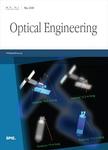版权所有:内蒙古大学图书馆 技术提供:维普资讯• 智图
内蒙古自治区呼和浩特市赛罕区大学西街235号 邮编: 010021

作者机构:Univ S Alabama Dept Elect & Comp Engn Mobile AL 36688 USA
出 版 物:《OPTICAL ENGINEERING》 (光学工程)
年 卷 期:2005年第44卷第6期
页 面:067005-1-067005页
核心收录:
学科分类:08[工学] 080401[工学-精密仪器及机械] 0804[工学-仪器科学与技术] 081102[工学-检测技术与自动化装置] 0811[工学-控制科学与工程] 0702[理学-物理学]
基 金:Army Research Office ARO (43004-CI)
主 题:target detection and tracking forward-looking infrared image video sequences performance metrics joint transform correlation correlation plane metrics data complexity
摘 要:The performance of target detection and tracking algorithms generally depends on the signature, clutter, and noise that are usually present in the input scene. To evaluate the effectiveness of a given algorithm, it is necessary to develop performance metrics based on the input plane as well as output plane information. We develop two performance metrics for assessing the effects of input plane data on the performance of detection and tracking algorithms by identifying three regions of operation-excellent, average, and risky intervals. To evaluate the performance of a given algorithm based on the output plane information, we utilize several metrics that use primarily correlation peak intensity and clutter information. Since the fringe-adjusted joint transform correlation (JTC) was found to yield better correlation output compared to alternate JTC algorithms, we investigate the performance of two fringe-adjusted JTC (FJTC)-based detection and tracking algorithms using several metrics involving the correlation peak sharpness, signal-to-noise ratio, and distortion invariance. The aforementioned input and output plane metrics are used to evaluate the results for both single/multiple target detection and tracking algorithms using real life forward-looking infrared (FLIR) video sequences. (c) 2005 Society of Photo-Optical Instrumentation Engineers.